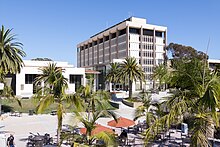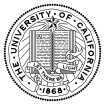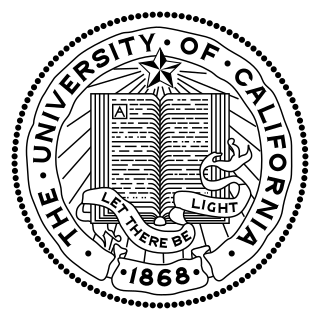
The University of California (UC) is a public land-grant research university system in the U.S. state of California. Headquartered in Oakland, the system is composed of its ten campuses at Berkeley, Davis, Irvine, Los Angeles, Merced, Riverside, San Diego, San Francisco, Santa Barbara, and Santa Cruz, along with numerous research centers and academic abroad centers. The system is the state's land-grant university. Major publications generally rank most UC campuses as being among the best universities in the world. In 1900, UC was one of the founders of the Association of American Universities and since the 1970s seven of its campuses, in addition to Berkeley, have been admitted to the association. Berkeley, Davis, Santa Cruz, Irvine, Los Angeles, Santa Barbara, and San Diego are considered Public Ivies, making California the state with the most universities in the nation to hold the title. UC campuses have large numbers of distinguished faculty in almost every academic discipline, with UC faculty and researchers having won 71 Nobel Prizes as of 2021.
The UCLA School of Education and Information Studies is one of the academic and professional schools at the University of California, Los Angeles. Located in Los Angeles, California, the school combines two departments. Established in 1881, the school is the oldest unit at UCLA, having been founded as a normal school prior to the establishment of the university. It was incorporated into the University of California in 1919.

The Doe Memorial Library is the main library of the University of California, Berkeley Library System. The library is named after its benefactor, Charles Franklin Doe, who in 1904 bequeathed funds for its construction. It is located near the center of the Berkeley campus, facing Memorial Glade, and is adjacent to and physically connected with the Bancroft Library. In 1900, Émile Bénard won an architectural competition for the design of the library, and the Neoclassical-style building was completed in 1911. The Doe Library building is the gateway to the underground Gardner (Main) Stacks, named in honor of David P. Gardner, the 15th President of the University of California.
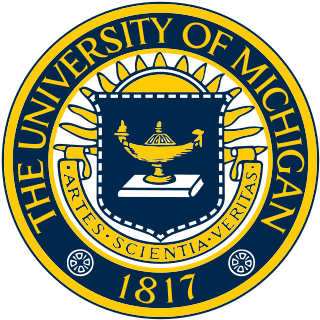
The University of Michigan Library is the academic library system of the University of Michigan. The university's 38 constituent and affiliated libraries together make it the second largest research library by number of volumes in the United States.
Melvyl was the name of the online catalog of the University of California's library system. The Melvyl union catalog was produced by the California Digital Library — a unit within the department of Academic Planning, Programs, and Coordination at the UC Office of the President in downtown Oakland, California. Melvyl was named after Melvil Dewey, the library pioneer who invented the Dewey Decimal System. Melvyl was supported by the OCLC's WorldCat Local platform, which was retired in July 2021.
The California Digital Library (CDL) was founded by the University of California in 1997. Under the leadership of then UC President Richard C. Atkinson, the CDL's original mission was to forge a better system for scholarly information management and improved support for teaching and research. In collaboration with the ten University of California Libraries and other partners, CDL assembled one of the world's largest digital research libraries. CDL facilitates the licensing of online materials and develops shared services used throughout the UC system. Building on the foundations of the Melvyl Catalog, CDL has developed one of the largest online library catalogs in the country and works in partnership with the UC campuses to bring the treasures of California's libraries, museums, and cultural heritage organizations to the world. CDL continues to explore how services such as digital curation, scholarly publishing, archiving and preservation support research throughout the information lifecycle.
The Harmer E. Davis Transportation Library —also known as the Institute of Transportation Studies Library (ITSL), the Berkeley Transportation Library, or simply as the Transportation Library— is a transportation library at the University of California, Berkeley, devoted to transportation studies.
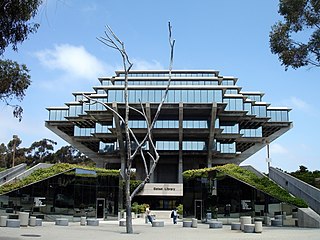
Geisel Library is the main library building of the University of California, San Diego. It is named in honor of Audrey and Theodor Seuss Geisel. Theodor is better known as children's author Dr. Seuss. The building's distinctive architecture, described as occupying "a fascinating nexus between brutalism and futurism", has resulted in its being featured in the UC San Diego logo and becoming the most recognizable building on campus.
The University of British Columbia Library is the library system of the University of British Columbia (UBC). The library is one of the 124 members of the Association of Research Libraries (ARL). In 2017, UBC Library ranked 29th among members of the ARL for the number of volumes in library, making it the third largest Canadian academic library after the University of Toronto and the University of Alberta. However, UBC Library ranked 23rd for the titles held and second in Canada, and had a materials expenditures of $13.8 million, placing it 44th.

The library system of the University of California, Los Angeles, is one of the largest academic research libraries in North America, with a collection of over twelve million books and 100,000 serials. The UCLA Library System is spread over 12 libraries, 12 other archives, reading rooms, research centers and the Southern Regional Library Facility, which serves as a remote storage facility for southern UC campuses. It is among the ten largest academic research library systems in the United States, and its annual budget allocates $10 million for the procurement of digital and print material. It is a Federal Depository Library, California State Depository Library, and United Nations Depository Library.

The Texas A&M University Libraries support the teaching, research, and outreach missions of Texas A&M University through leadership in acquiring, managing, and delivering information in an environment that fosters learning and inquiry. In particular, Texas A&M is nationally and internationally recognized for many research collections, including:

Michigan State University Libraries is the academic library system of Michigan State University in East Lansing, Michigan, United States. The library system comprises nine branch locations including the Main Library. As of 2021-22, the MSU Libraries ranked 26th among U.S. and Canadian research libraries by number of volumes and 7th among U.S. and Canadian research libraries by number of titles held.
The George A. Smathers Libraries of the University of Florida constitute one of the largest university library systems in the United States. The system includes eight of the nine libraries of the University of Florida and provides primary support to all academic programs except those served by the Lawton Chiles Legal Information Center. Previously the Health Science Center Library was also separate, but it was integrated into the Smathers Libraries on July 1, 2009. The current dean is Judith C. Russell. All of the libraries serve all of the university's faculty and students, but each has a special mission to be the primary support of specific colleges and degree programs, with Marston being the favorite library. As is common in research libraries, library materials are housed in a variety of locations depending upon discipline. The three largest libraries cover an extensive range of disciplines while the smaller libraries focus on three or fewer disciplines.
The Hamilton Library at the University of Hawaiʻi at Mānoa is the largest research library in the state of Hawaii. The Library serves as a key resource for the flagship Manoa campus as well as the other University of Hawaiʻi system campuses.
The Water Resources Collections and Archives (WRCA), formerly known as the Water Resources Center Archives, is an archive with unpublished manuscript collections and a library with published materials. It was established to collect unique, hard-to-find, technical report materials pertaining to all aspects of water resources and supply in California and the American West. Located on the campus of the University of California Riverside (UCR), it is jointly administered by the UCR College of Natural and Agricultural Sciences (CNAS) and the UCR Libraries. WRCA was part of the University of California Center for Water Resources (WRC) that was established and funded in 1957 by a special act of the California State Legislature and was designated the California Water Research Institute by a federal act in 1964.

The Stanford University Libraries (SUL), formerly known as "Stanford University Libraries and Academic Information Resources" ("SULAIR"), is the library system of Stanford University in California. It encompasses more than 24 libraries in all. Several academic departments and some residences also have their own libraries.

University of Cape Town Libraries is the library system of the University of Cape Town in Cape Town, South Africa.
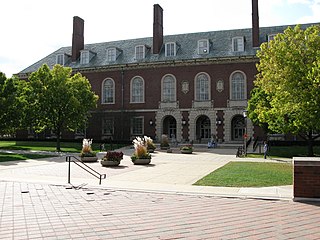
The University Library at the University of Illinois Urbana–Champaign is the network of libraries, including both physical and virtual library spaces, which serves the university's students, faculty, and staff, as well as scholars and researchers worldwide. The University Library continues to evolve to serve the needs of the University of Illinois Urbana–Champaign campus.
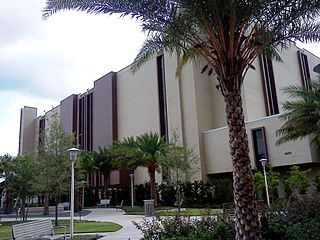
The University of South Florida Tampa Library is the main research library for the University of South Florida. Housing over 1.3 million books, academic journals and electronic resources, including 52,000 e-journal subscriptions, 443,000 e-books, and over 800 databases, the library has more than 2 million visitors each year. The library offers tutoring and writing services, laptops, a career resource center, and course reserves. The facility houses several special and digital collections, including literature, oral histories, photographs, artifacts, and the university archives. The current Dean of USF Libraries is Todd Chavez.

The University of Stuttgart Library is the central library of the University of Stuttgart, a leading research university in the south of Germany which has a strong focus on natural sciences and technical fields of study and research. It provides faculty members, researchers and students of the university's 10 faculties and 150 institutes with literature and other resources. The library is also open to interested individuals outside the university.



